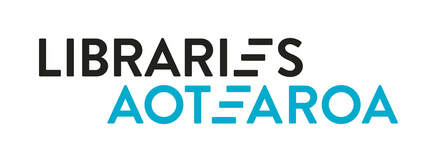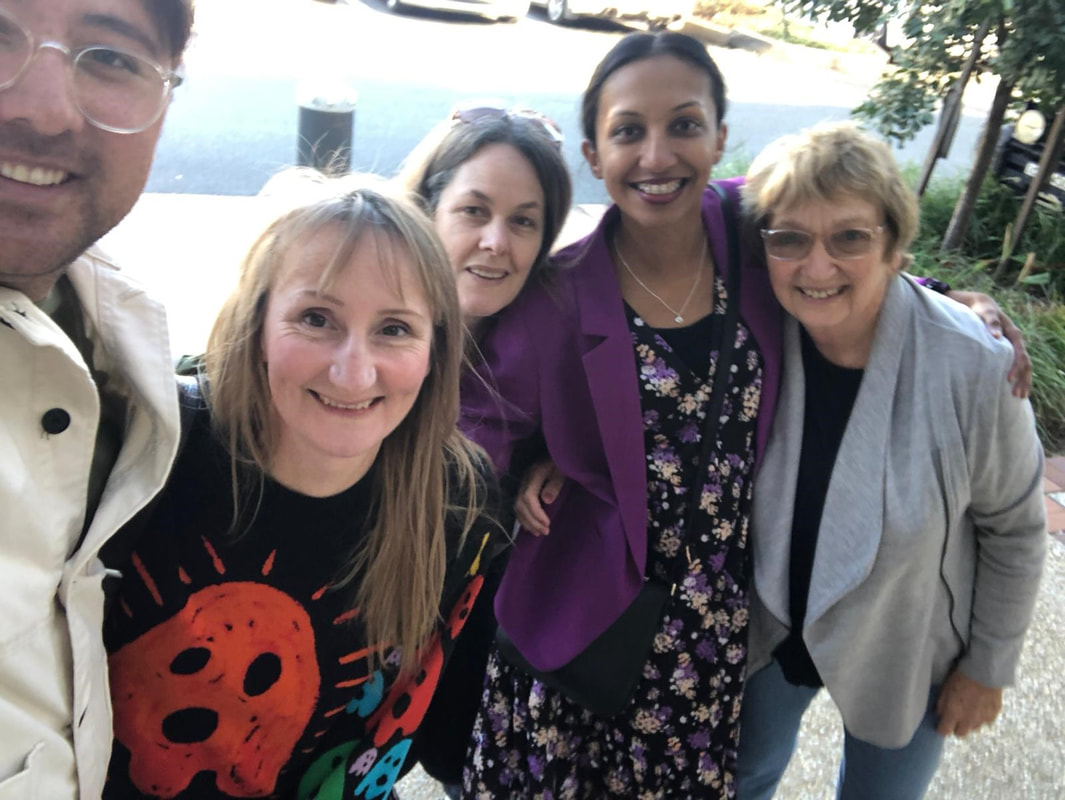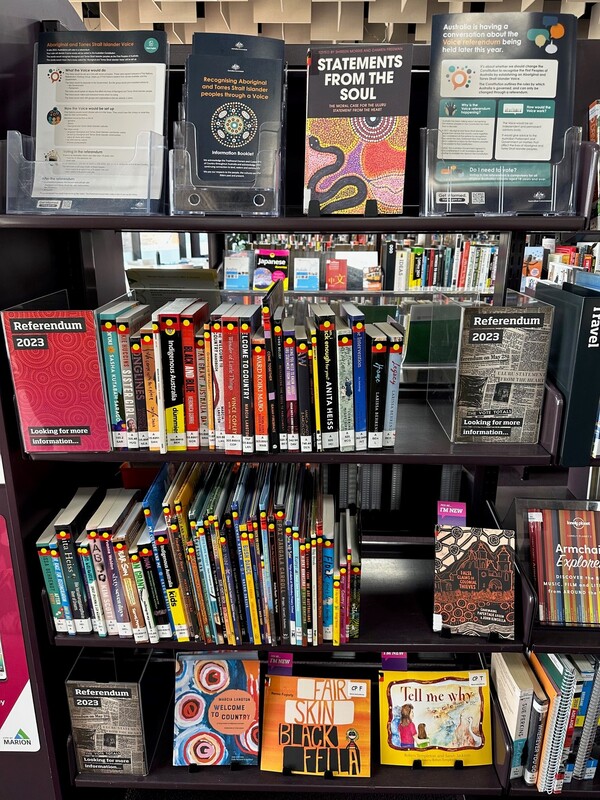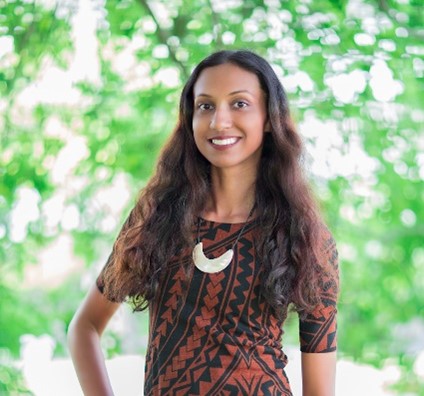I want to begin by acknowledging the traditional owners and custodians of the lands on which the research took place in the various interstate libraries we visited. I pay my respects to elders past, present and emerging. I extend that respect to Aboriginal and Torres Strait Islander peoples.
The 12 days of warm Australian sunshine, eating delicious barramundi, and heartfelt appreciation for the beautiful heritage buildings, diversity and community engagements were some of the highlights of visiting Australia in my birthday month, August. I was blessed to be the LIANZA representative on the tour, travelling with Marion Read, Denise Clarkson, Māia Abraham and Siren Deluxe.
We began preparing for the trip over Zoom in May. Our e-talanoa involved getting to know each other, selecting and deciding on the list of potential libraries to visit, and finalising the accommodation and flight details. We all had tasks, and the team prepared an infographic of the common themes and questions, which we sent to the Australian library managers in advance, on programmes, community and partnerships, governance and strategies, operations, staffing and resources, spaces and design and key issues and trends.
It has been a trip of sharing, giving and receiving information. I demonstrated my Fijian values of veiwekani – relationships, vei talanoa – conversing respectfully with people, and vei rogorogoci – listening with respect and intently to others, making connections on how a library is a place and space that brings people and information together under the whare/vale/fale of learning.
The library visits covered the states of New South Wales and South Australia.
SYDNEY LIBRARY VISITS
We visited 10 libraries in the first three days of the trip. These were: City of Parramatta – The Phive, Wentworth Point Community Centre and Library, Our Library@ Mount Druitt, Granville Centre, Cumberland Libraries, Wentworthville Library, Marrickville Library, Haberfield Library and Community Hall Heritage Project, Lane Cove St Leonards Library, and the State Library of NSW.
The team then flew to Port Macquarie to continue our journey and to spend a whole day in Kempsey, visiting the Kempsey Library and Port Macquarie Library.
From there, the team was split between Adelaide and Melbourne for a few days before finishing the tour.
From there, the team was split between Adelaide and Melbourne for a few days before finishing the tour.
ADELAIDE LIBRARY VISITS
I visited the Onkaparinga Libraries, which included Woodcroft, Seacroft and Noarlunga Libraries, Cove Civic Centre, Cultural Centre Library, Salisbury Community Hub, Burton Community Hub, Para Hills Community Hub, and the State Library of South Australia.
WHAT I LEARNED AS A LIBRARIAN AND AS A RESEARCHER Libraries
The roles of libraries and librarians have evolved as we move beyond the traditional library and its functions. I saw excellent examples of co-existing and co-locating Australian public libraries and community/cultural hubs operating together and fit for purpose. The community hubs are designed to transform the notion of thinking beyond libraries full of books. It demonstrated the extraordinary value of public libraries situated in the heart of communities and local councils, representative of the identities of the place. The PHIVE in Parramatta is not just a library. The $138 million architecturally designed award-winning landmark combines smart technology and eco-friendly interiors to create a balanced library functioning as a service delivery model, enabling equity of access and promoting information literacy. Another example of a school hub library in Onkaparinga showcased the joint use of resources in a metro area to attract young people to engage with a floating collection.
I believe some Australian public libraries are emerging in bicultural consultations and indigenous partnerships to provide culturally safe access to Aboriginal and Torres Strait Islander library services and collections.
I found it encouraging to see library displays on the Australian Indigenous Voice referendum held on October 14, 2023.
COMMUNITIES
The COVID-19 pandemic has had a substantial impact on public libraries in Australia. Almost all libraries experienced some period of lockdown, resulting in libraries adapting their services to suit the diverse needs of their communities. Australia’s public library system serve a diverse range of urban, regional and remote communities, including young and aged populations and immigrants. Many libraries have recognised the importance of partnering with local communities and councils to strengthen the voice and advocacy for a successful library.
Hearing how those public libraries responded and established new practices of connecting with a ‘new normal’ from a user perspective was promising. For example, libraries transitioned into online services provided safe spaces for the homeless and interactive hubs for the children’s programme, and increased the community languages available in the physical collection. It was wonderful to see diverse communities connecting with both libraries as a collection and an inclusive and safe space to study, learn and feel the warmth of the ‘village’ coming together.
Kempsey Shire Council and library staff showed us their garden decorated with hands. The hands had messages to acknowledge the land's traditional custodians, the Thunggutti/Dunghutti nation, and celebrate National Reconciliation Week.
I had many interactions, conversations and networking opportunities with my Australian library colleagues through the respectful way of vei talanoa. We had meaningful spoken engagements to understand better how librarians from ALIA and LIANZA professional organisations support the library and information sector in the libraries, places and communities we serve in Aotearoa and Australia. The face-to-face interactions provided more context and an open process to share knowledge, while maintaining the kaupapa of our team project.
There were some excellent examples of library design, green hubs, community hubs and modern spaces.











 RSS Feed
RSS Feed